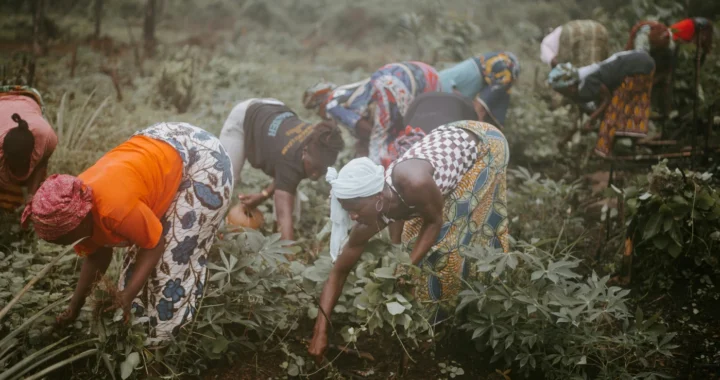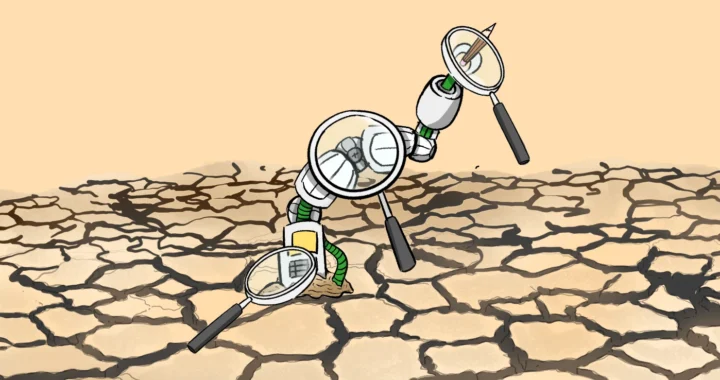Power Imbalance and Increasing Pressures: Looking into the Transboundary Water Governance in the Mekong River

Photo: Tomáš Malík on Unsplash.
The Mekong River flows through China and five Southeast Asian countries—Thailand, Laos, Cambodia, Myanmar, and Vietnam. It supports over 61 million people with food, energy, and transportation. However, anthropogenic factors are putting pressure on the river’s sustainability. Amid climate change and unequal power dynamics, strengthening transboundary water governance is crucial to ensure the Mekong River remains a safe and sustainable source of life for humans and biodiversity alike.
Vital Role and Increasing Pressures
The Mekong River is home to hundreds upon hundreds of biodiversity species. For humans, it plays a vital role in supporting the economies and development of the surrounding areas. According to a report by the Mekong River Commission, fish catches reach 1.51–1.71 million tons per year, along with around 443,000 tons of other aquatic animals such as shrimp and crabs. Combined, the economic value is over USD 8 billion. The river also supports agricultural irrigation and serves as a transportation route for cross-border trade.
However, various human activities are threatening the river’s health, abundance, and ecosystem services. Large-scale dam construction, resource exploitation, growing water demand, and climate change are among them.
Large-scale dam development, particularly in China and Laos, has had significant impacts. Satellite data shows that dams have reduced up to 81% of the sediment flow critical for the Mekong River Delta. The loss of sediment decreases agricultural and fishery productivity, threatening millions of livelihoods. Such disruptions highlight the urgency of effective transboundary water governance to balance competing demands and ecological risks.
The Mekong River Commission and Its Limitations
The Mekong River Commission (MRC) was established in 1995 with Laos, Thailand, Cambodia, and Vietnam as members, while China and Myanmar became dialogue partners. It provides a platform for coordination and joint planning, which facilitates water flow monitoring, data management, and climate adaptation strategies. Its Basin Development Strategy 2021–2030 and Strategic Plan 2021–2025, for instance, emphasize data transparency, stakeholder engagement, and capacity building for its member states.
An important instrument under the MRC is the Procedures for Notification, Prior Consultation and Agreement (PNPCA). Essentially, it means major projects like hydropower dams along the Mekong River basin require consultation and agreement before proceeding.
However, this mechanism is often criticized as being largely procedural and not legally binding. Critics argue that some member states still proceed with projects despite objections. The PNPCA and related guidelines are often viewed as advisory rather than legally enforceable, limiting their functions in the complex challenges of transboundary water governance.
Unequal Power Dynamics
One of the main challenges in the Mekong River management lies in the power imbalance between upstream and downstream countries. China, controlling much of the river’s headwaters, exerts significant influence through its extensive dam network. Meanwhile, downstream governments and communities often lack timely data on China’s dam operations, making it difficult to prepare for abrupt water-level fluctuations or sediment shortages.
These conditions have been linked to persistent flooding, salinity intrusion, erosion, and the formation of sandbars that disrupt farming and navigation. Furthermore, research indicates that upstream dams have already blocked much of the sediment flow to the Mekong Delta, contributing to crop failures and fish stock declines. Periods of severe drought have also coincided with large-scale water storage upstream, exacerbating water shortages in downstream states.
These dynamics rife with power imbalance reveal serious institutional gaps. While downstream countries are bound by MRC mechanisms, China participates only as a dialogue partner, retaining broad freedom to pursue projects without formal accountability. This unequal governance framework heightens the vulnerability of Southeast Asian states and riparian communities to ecological shocks and socio-economic disruption.
Paths Toward Stronger Transboundary Water Governance
Despite the tensions, there are avenues to strengthen transboundary water governance in the Greater Mekong. One key step is improving transparency and data sharing.
The MRC has launched tools such as the One Mekong App and its Education Hub in Vientiane, Laos, providing real-time river monitoring and forecasting to the public. Such platforms can build trust among riparian countries while helping downstream communities anticipate changes in water flow or sediment load. Efforts like the Mekong Dam Monitor (MDM), developed by the Stimson Center and Eyes on Earth, also improve accountability by using satellite and hydrological data to deliver early warnings up to 48 hours before potential disruptions in the Golden Triangle.
Another pathway lies in diplomacy. The Lancang–Mekong Cooperation (LMC), for example, offers an additional platform to promote dialogue between China and all Mekong countries. Still, legally binding and well-enforced regulations that address the power imbalance between China and the downstream countries is urgently needed.
Ultimately, the future of the Greater Mekong depends on balancing national priorities with regional sustainability and economic development with ecological wellbeing. Stronger commitments to take responsibility and demand accountability can transform the Mekong River from a source of tension into a model of cooperative, sustainable transboundary water governance.
Editor: Nazalea Kusuma

Join Green Network Asia – An Ecosystem of Shared Value for Sustainable Development
Support Green Network Asia’s movement to create positive impact for people and the planet through public education and multi-stakeholder advocacy on sustainability-related issues and sustainable development.
Become a Member Now

 Singapore Passed OSRA Bill to Protect Victims of Cyberviolence
Singapore Passed OSRA Bill to Protect Victims of Cyberviolence  How The Great Green Wall Evolves to Embrace Indigenous Land Management
How The Great Green Wall Evolves to Embrace Indigenous Land Management  Intelligence with Integrity: The Case for a Carbon-Conscious AI Development
Intelligence with Integrity: The Case for a Carbon-Conscious AI Development  The Rise of Renewable Energy Overtakes Coal as Electricity Source
The Rise of Renewable Energy Overtakes Coal as Electricity Source  Dead Zone: The Declining Oxygen Levels in Rivers
Dead Zone: The Declining Oxygen Levels in Rivers  COP30: A Critical Moment to Adopt Climate Adaptation Indicators
COP30: A Critical Moment to Adopt Climate Adaptation Indicators